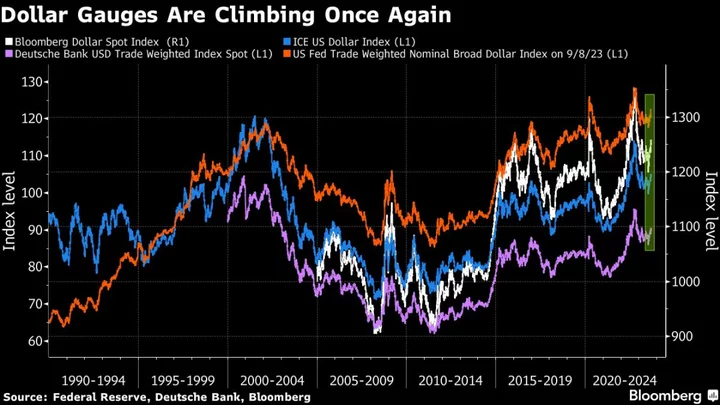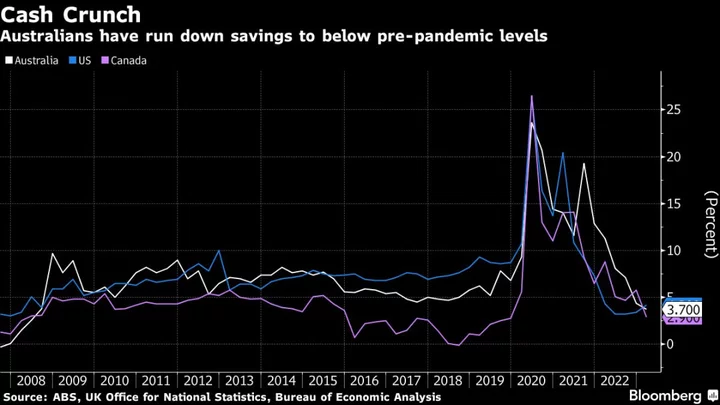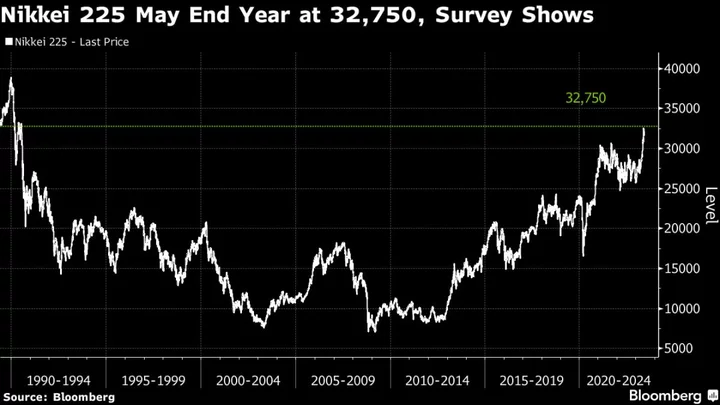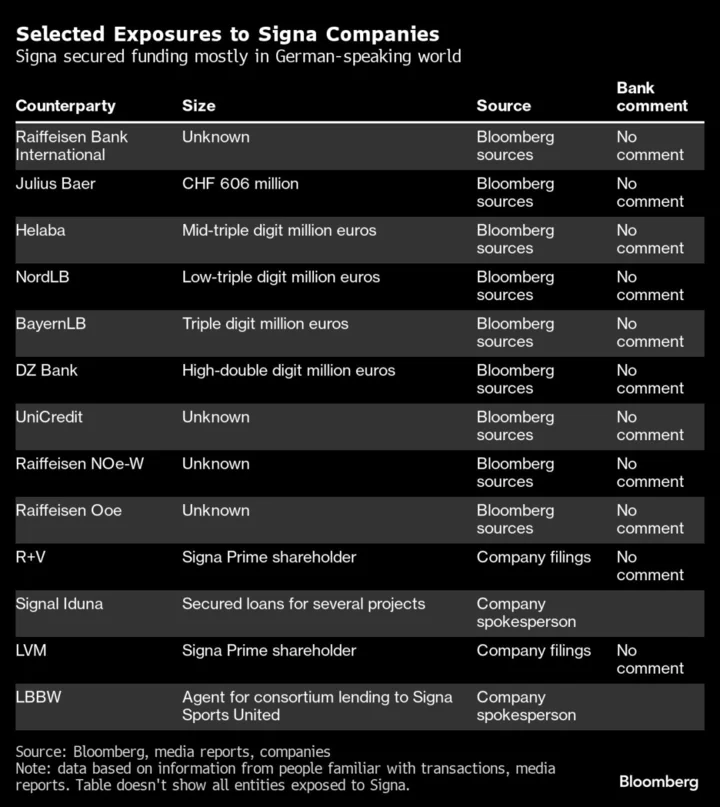Mark Nash thought the US dollar’s rally was done.
It was late 2022, and his bets against bonds had paid off after the Federal Reserve’s interest-rate hikes sent markets into a tailspin. So his fund at Jupiter Asset Management, like many others, was placing a popular wager on the next phase of the cycle: As the Fed’s tightening neared an end, it would halt the stampede of cash that raced in to seize on rising rates — and the US currency would fall.
That appeared to be playing out at times this year as the dollar drifted lower. Then, in July, it rapidly reversed course.
Fueled by a widening rift in the global economy as the US defies pessimistic forecasts and growth falters in China and Europe, the dollar has roared back, rising sharply against virtually every major currency over the last two months.
That unexpected resurgence is reverberating around the globe. Investors are now unwinding trades. Officials in China and Japan are moving to protect their currencies. US companies are bracing for a hit to their earnings. And across the developing world it’s evoking painful memories of 2022, when the dollar delivered economic shocks by pushing up the price of commodities in global markets and increasing the burden of foreign debts.
“The dollar is a beast again,” said Nash, who abandoned his bearish dollar position in the middle of the year.
The greenback’s rebound is another example of how much markets have been blindsided by the surprising resilience of the US economy — and the persistent inflation that’s come with it. In late 2022, a vast majority of economists were predicting the Fed would likely be shifting into recession-fighting mode by now, dialing back interest rates to jump-start a recovery.
Instead, the US has powered ahead even as growth shows signs of stalling overseas. That’s driving investors to shift cash to the US, where interest rates are expected to remain higher and the stock market has been supported by expectations the Fed will wind up its rate-hiking cycle with the economy largely intact.
The combination has pushed the Bloomberg Dollar Spot Index back near this year’s highs after a record eight-week rally that began in mid-July.
So far, it still remains below last year’s peaks. That’s made the fallout more muted than in 2022, when the steep run-up in the dollar worsened inflationary pressures around the world by pushing up the cost of commodities — like oil — that are priced in the US currency.
But with little confidence the dynamics behind its recent rise will soon reverse, analysts have been ditching bearish calls on the dollar.
Charles Diebel, the head of fixed income at Mediolanum International Funds, favored a weaker dollar coming into 2023 but pivoted to a neutral stance around the middle of the year as the US economy continued to outperform.
“If you put a gun to my head, I would probably still favor a weaker dollar over the next six to 12 months,” he said. “But for the next three months, I am not so convinced. It could probably strengthen a bit more.”
What Bloomberg Strategists Say...
“The cyclically bullish dollar drivers that held sway in 2022 have returned this summer, with US relative economic resilience contrasting with euro underperformance and China economic concerns.”
Audrey Childe-Freeman, Chief G-10 FX strategist at Bloomberg Intelligence
Kit Juckes, a strategist at Societe Generale, said the market is now being driven more by the diverging growth outlook than by interest rates themselves. He pointed to the euro’s slide even as the European Central Bank raised rates last week, and he attributed the move to the bank’s more pessimistic growth outlook.
“The only positive I can think of for the euro and the sterling,” he wrote in a note to clients, “is that expectations about UK and eurozone growth are already dire relative to the US.”
In the US, where a more optimistic profit outlook has helped to bolster share prices, the dollar’s rise is threatening to reduce earnings from abroad. Apple Inc., for example, said the strong dollar has weighed on sales in Europe and Asia, while Walt Disney Co. is expecting it to curb the number of theme-park visitors coming from abroad. Last year, analysts from Credit Suisse Group AG estimated that every 8% to 10% jump in the dollar triggers, on average, a roughly 1% hit to US company profits.
But, overall, it’s emerging-market nations that will likely bear the brunt. That’s in part because it makes imports more expensive and exaggerates inflation pressures, encouraging central banks to hold interest rates high to defend their currencies and keep cash from fleeing.
Last week, Poland’s government stepped in to prop up the zloty after a larger-than-expected interest-rate cut triggered a selloff in the currency. Such rate moves might have gone unpunished in the past, but the strong dollar leaves little room for policy loosening to support economic growth.
In China and Japan, officials this month signaled a willingness to protect their currencies from further declines. After the offshore yuan closed at a record low, Chinese policymakers pushed back by setting the yuan’s daily reference rates at a stronger-than-expected level and seeking to raise the cost of funding to those betting against the currency. In Japan, Masato Kanda, the vice finance minister for international affairs, indicated the government is prepared to intervene in the markets again if the yen weakens further.
“Should either or both of these central banks intervene via FX reserves, likely through selling US Treasuries, the outlook for the dollar is unclear,” Eva Sun-Wai, money manager in London for M&G Investments, wrote in a note to clients.
A US downturn could also restrain the dollar, though there’s been few signs of one on the horizon.
Nash, the London-based fund manager at Jupiter Asset Management, is among those who’ve been whipsawed by the shifts in world markets this year.
Last year, his bond fund beat more than 90% of its peers by posting a more than 6% gain. But it was stung by unexpected bond-price moves when Silicon Valley Bank’s collapse fueled concerns of a US credit crisis and has lost about 1% in 2023.
His bet against the dollar was also vexing. There were times when the currency would fall on weaker-than-expected data, only to reverse just hours later. He saw it as a clear sign: The dollar’s moves were reflecting the diminished growth prospects elsewhere in the world.
So he abandoned his bearish call on the US currency in June.
“The US growth story is just strong and the rest of the world has been weak,” he said. If the Fed manages to tame inflation and US growth continues, “the dollar will remain firm.”
--With assistance from Dayana Mustak, Alice Atkins, George Lei, Anya Andrianova and Sujata Rao.
Author: Ruth Carson, Nishant Kumar and Carter Johnson









